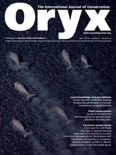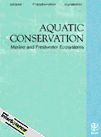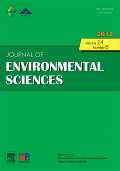
ENVIRONMENTAL CONSERVATION
Scope & Guideline
Connecting Research and Policy for Lasting Change
Introduction
Aims and Scopes
- Ecosystem Services Valuation:
Research focusing on the economic valuation of ecosystem services, particularly in relation to conservation efforts, helps to quantify the benefits provided by natural systems. - Community Engagement and Conservation:
Studies that examine the role of local communities in conservation practices, emphasizing participatory management and the socio-cultural dimensions of environmental stewardship. - Biodiversity Monitoring and Assessment:
Research that entails the monitoring and assessment of biodiversity, particularly in response to anthropogenic impacts, is crucial for informing conservation strategies. - Climate Change Impacts and Adaptation:
Investigations into how climate change affects ecosystems and species, alongside strategies for adaptation, are increasingly relevant in conservation discussions. - Policy and Governance:
Articles that analyze the effectiveness of conservation policies, governance structures, and their implications for sustainable environmental management. - Innovative Conservation Techniques:
Research exploring new methodologies and technologies, such as remote sensing and citizen science, to enhance conservation efforts and data collection.
Trending and Emerging
- Integrative Approaches to Conservation:
There is a growing trend towards integrative research that combines ecological, social, and economic perspectives, indicating a recognition of the complexity of conservation issues. - Urban Ecology and Green Infrastructure:
Research focusing on urban ecosystems and the role of green infrastructure in promoting biodiversity and ecosystem services is on the rise, reflecting increasing urbanization challenges. - Climate Resilience and Adaptation Strategies:
Emerging studies are increasingly addressing climate resilience, exploring how ecosystems and communities can adapt to changing climate conditions. - Technology-Driven Conservation Solutions:
The use of advanced technologies, such as remote sensing, drones, and machine learning, is becoming more prevalent in conservation research, enhancing data collection and analysis. - Socio-Ecological Systems and Governance:
There is an increasing emphasis on understanding socio-ecological systems and their governance, highlighting the interconnections between human actions and ecological outcomes.
Declining or Waning
- Traditional Wildlife Management Practices:
The focus on conventional wildlife management techniques seems to be waning, with a shift towards more integrated and community-based approaches that consider socio-economic factors. - Single-Species Conservation Efforts:
There is a noticeable decline in papers solely dedicated to single-species conservation, as the trend moves towards ecosystem-based management and holistic conservation strategies. - Static Land Use Studies:
Research that merely documents land use changes without integrating dynamic ecological or socio-economic contexts is becoming less frequent, as there is a growing demand for adaptive management frameworks. - Invasive Species Management:
Although still important, the frequency of research focused solely on invasive species management appears to be decreasing, possibly due to a broader focus on ecosystem resilience and holistic approaches.
Similar Journals

European Journal of Environmental Sciences
Innovating Insights into Pressing Environmental ChallengesEuropean Journal of Environmental Sciences is a prominent open-access journal dedicated to disseminating high-quality research in the field of environmental science. Published by Charles University, Faculty of Mathematics & Physics, this journal has been a vital platform since 2011, facilitating free access to insightful studies and findings pertinent to pressing environmental issues. Its scope encompasses crucial topics in Ecology, Management, Monitoring, Policy, Law, Nature and Landscape Conservation, and Pollution. With a significant presence in the academic community, the journal currently holds a Q3 and Q4 category ranking in various subfields of environmental science, as assessed in 2023, showcasing its relevance and impact in the discipline. Researchers, professionals, and students engaging with the European Journal of Environmental Sciences will find it an essential resource for enhancing their understanding of environmental challenges and contributing to innovative solutions.

ORYX
Pioneering Research for a Sustainable FutureORYX, published by Cambridge University Press, stands as a prestigious scholarly journal in the fields of Ecology, Evolution, and Conservation. With an ISSN of 0030-6053 and E-ISSN 1365-3008, this journal has been a critical platform for researchers and professionals since its inception in 1950. Recognized for its excellence, ORYX ranks in the Q1 quartile for both Ecology, Evolution, Behavior and Systematics and Nature and Landscape Conservation as of 2023, highlighting its influential contributions to the field. With a strong focus on disseminating innovative research and fostering collaboration among scientists, the journal covers a broad array of topics, from biodiversity and ecosystem services to conservation strategies and policy implications. As a result, ORYX provides invaluable insights that help shape the future of environmental science. Its impressive Scopus rankings place it in the top 80th percentile in its categories, further underscoring its importance and appeal among academics, professionals, and students alike.

ENVIRONMENTAL SCIENCE AND POLLUTION RESEARCH
Transforming Environmental Insights into Actionable SolutionsEnvironmental Science and Pollution Research is a premier international journal published by Springer Heidelberg, dedicated to advancing knowledge in the field of environmental science and pollution. With an impressive impact factor reflecting its vital contributions to research, the journal is categorized in the top quartiles (Q1 and Q2) across several domains, including Health, Toxicology and Mutagenesis, and Environmental Chemistry. Established in 1994, it continues to be a critical resource for researchers, professionals, and students focusing on pressing environmental issues. The journal provides an insightful platform for disseminating significant findings related to pollution and its effects on health and the environment, contributing to a better understanding and resolution of these challenges. While it currently does not offer Open Access options, its inclusion in prominent rankings, such as the Scopus rankings, underscores its reputation and influence within the scientific community.

JOURNAL OF COASTAL CONSERVATION
Uniting voices in ecology to safeguard our shores.JOURNAL OF COASTAL CONSERVATION, published by SPRINGER, is a premier academic journal dedicated to the study and promotion of coastal ecosystem management and conservation strategies. With a rich publication history beginning in 1995 and spanning over multiple converged years, this journal serves as a vital platform for researchers and professionals in the fields of Ecology, Nature and Landscape Conservation, and Oceanography. Recognized for its impactful contributions, it holds a Q2 ranking in multiple categories for 2023, including Ecology and Oceanography, underscoring its significance in advancing knowledge and practice in coastal conservation. With a commitment to delivering high-quality, peer-reviewed articles, the journal facilitates discourse on critical issues affecting coastal environments, making it an essential resource for scholars and practitioners looking to enhance the sustainability and resilience of coastal habitats. The journal provides broad access to vital research findings, ensuring that both the academic community and policy-makers have the information necessary to address the pressing challenges facing coastal regions worldwide.

AQUATIC CONSERVATION-MARINE AND FRESHWATER ECOSYSTEMS
Championing the conservation of vital aquatic environments.AQUATIC CONSERVATION-MARINE AND FRESHWATER ECOSYSTEMS, published by WILEY, is a premier international journal dedicated to advancing the understanding of aquatic ecosystems and their conservation. With an impact factor reflecting its significant influence and a distinguished position in the Q1 quartile across key categories such as Aquatic Science, Ecology, and Nature and Landscape Conservation, this journal serves as an essential resource for researchers and professionals engaged in the study and protection of marine and freshwater environments. Covering a broad array of topics, from ecosystem management to conservation strategies, the journal encourages the dissemination of innovative research and interdisciplinary perspectives. Although it is not an open-access publication, this journal is esteemed for its rigorous peer-review process, facilitating a platform where vital research influences policy and practice in the aquatic sciences. Established in 1991, AQUATIC CONSERVATION continues to be a cornerstone in the academic exploration and safeguarding of aquatic ecosystems through to its converged years of 2024 and beyond, providing a critical lens for the future of environmental sustainability.

Euro-Mediterranean Journal for Environmental Integration
Fostering Collaboration to Tackle Environmental Challenges Head-OnThe Euro-Mediterranean Journal for Environmental Integration, published by SPRINGER HEIDELBERG, serves as a pivotal platform for interdisciplinary research in the realm of environmental science, particularly focused on the unique ecological and socio-economic context of the Euro-Mediterranean region. With its ISSN 2365-6433 and E-ISSN 2365-7448, this journal aims to foster a collaborative approach to environmental challenges, integrating insights from various fields such as ecology, geography, and sustainable development. Since its inception in 2016, it has made significant strides, achieving a Q3 ranking in Environmental Science and maintaining a notable position within the Scopus rankings, sitting at #102 out of 233 in the general environmental science category, which reflects its growing influence in academic discourse. The journal is committed to open dialogue among researchers, professionals, and students aimed at advancing knowledge and promoting innovative solutions to pressing environmental issues. Access to its comprehensive articles and findings will be key to contributing to a more sustainable future.

Annual Review of Environment and Resources
Connecting experts to drive environmental innovation.Annual Review of Environment and Resources, published by Annual Reviews, is a premier peer-reviewed journal dedicated to advancing the field of environmental science. With an impressive impact factor and recognition as a Q1 journal in Environmental Science, it ranks #2 out of 233 in Scopus, placing it in the 99th percentile of its category. Since its inception in 2003, the journal has provided comprehensive, accessible, and high-quality reviews that synthesize key developments and emerging trends in environmental science, making it an essential resource for researchers, professionals, and students alike. The journal is committed to promoting open access to vital research, reflecting the increasing demand for transparency in scientific communication. With its dedicated editorial team and extensive network of experts, the Annual Review of Environment and Resources continues to shape the discourse on environmental sustainability and resource management.

Regional Sustainability
Fostering global collaboration for sustainable development.Regional Sustainability is a premier open access journal published by KEAI PUBLISHING LTD, devoted to the interdisciplinary exploration of sustainable practices within urban and regional contexts. Since its inception in 2020, this journal has quickly established itself as a leading platform for innovative research, currently holding a strong position in category quartiles, including Q1 rankings in Development and Geography, Planning and Development in 2023. With its broad scope encompassing essential themes in Renewable Energy and Urban Studies, Regional Sustainability provides valuable insights and advances knowledge critical for sustainable development, drawing contributions from scholars and practitioners worldwide. The journal’s impressive Scopus rankings underscore its significance with a percentile rank of 87th in both Urban Studies and Development, making it essential reading for researchers and policymakers alike. The journal is headquartered in Beijing, China, and is committed to disseminating high-quality research that addresses contemporary challenges in sustainability.

Conservation Letters
Elevating Voices in the Pursuit of Environmental SolutionsConservation Letters, published by Wiley, is a premier peer-reviewed journal dedicated to advancing the field of conservation science. As an Open Access journal since 2015, it provides researchers, practitioners, and policymakers with immediate access to cutting-edge research and insights that shape effective conservation strategies globally. With an impressive impact factor and a distinguished standing in the academic community—ranking in the Q1 category in disciplines such as Ecology, Evolution, and Nature Conservation—the journal plays a vital role in disseminating high-quality research that informs environmental practices. Based in the United States, it encompasses a broad scope of topics aimed at bridging scientific findings with real-world applications, effectively contributing to the understanding and preservation of biodiversity. Researchers looking to publish innovative work in an influential platform will find Conservation Letters an essential venue for ensuring their research reaches an engaged international audience.

Journal of Environmental Sciences
Connecting Scholars to Transform Environmental PracticesJournal of Environmental Sciences, published by SCIENCE PRESS, is a premier scholarly journal dedicated to advancing knowledge in the multidisciplinary fields of environmental science, environmental chemistry, and environmental engineering. Established in 1970 and based in Beijing, China, this journal has consistently garnered recognition for its high-quality research, demonstrated by its Q1 rankings across multiple categories, including Environmental Chemistry, Environmental Engineering, and General Environmental Science. With an impressive Scopus rank of #11 for Environmental Science, the journal has firmly positioned itself within the top tier of its field, attracting contributions from leading researchers and academics worldwide. Although it operates under subscription access, the journal's commitment to disseminating critical insights into pressing environmental issues makes it an invaluable resource for professionals, researchers, and students striving to make impactful contributions to the understanding and management of environmental challenges.